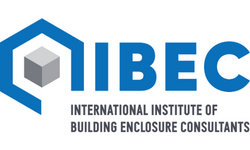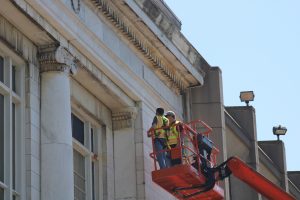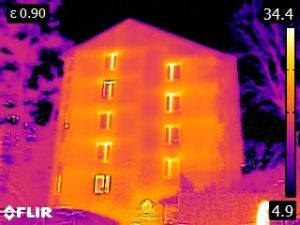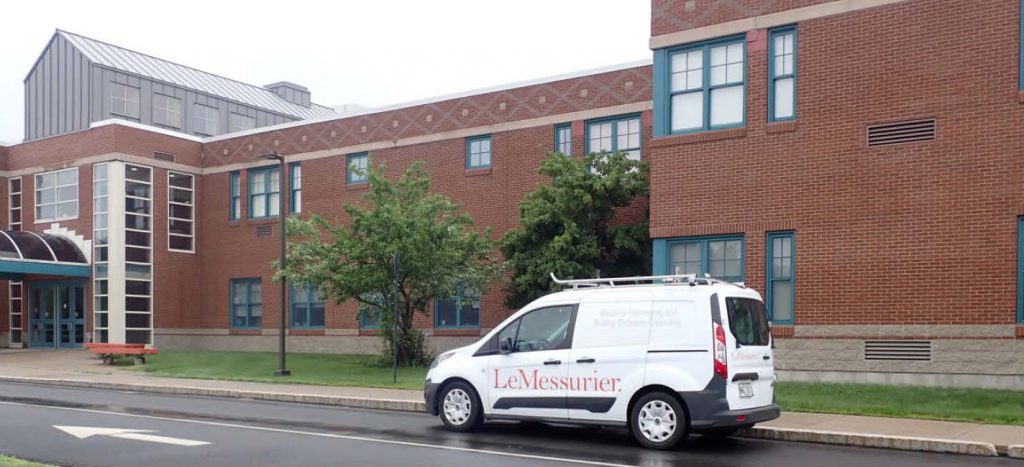 The gap between a building’s design and its actual performance, specifically its energy use, is wider than ever. As sustainability targets and building codes become increasingly stringent, specialized expertise is no longer optional — it’s the competitive edge. We recently sat down with John Karman to discuss the critical, often-overlooked role of a high-performance building envelope in meeting modern design challenges. John, who joined our Enclosure team this year, is a 35-year veteran and the current President of the International Institute of Building Enclosure Consultants (IIBEC) New England Chapter.
The gap between a building’s design and its actual performance, specifically its energy use, is wider than ever. As sustainability targets and building codes become increasingly stringent, specialized expertise is no longer optional — it’s the competitive edge. We recently sat down with John Karman to discuss the critical, often-overlooked role of a high-performance building envelope in meeting modern design challenges. John, who joined our Enclosure team this year, is a 35-year veteran and the current President of the International Institute of Building Enclosure Consultants (IIBEC) New England Chapter.
IIBEC’s Value Proposition
Q: For those less familiar, what is the core mission of the International Institute of Building Enclosure Consultants (IIBEC), and what is the single most valuable contribution it makes to the overall Building Enclosure industry?
John Karman: The core mission of IIBEC is to be the leading resource for the building enclosure community, primarily focused on roofing, waterproofing, and exterior wall performance. We refer to it as maintaining a building’s six sides.
Its single most valuable contribution is setting the standard of expertise, demonstrated through professional credentials. Certifications like Registered Roof Consultant (RRC®) and Registered Exterior Wall Consultant (REWC®) ensure that when a client hires an IIBEC member, they are working with a verified expert who understands the complex systems necessary to maintain and restore buildings for long-term durability.
Industry Trends & Education
Q: From an educational standpoint, what are the most critical emerging trends or regulatory challenges (e.g., embodied carbon, new energy codes, resilient design) that IIBEC is currently focused on equipping its members to handle?
John Karman: One of the most critical challenges right now is the confluence of air/vapor control and new energy codes. As buildings become tighter to meet efficiency standards, the smallest failure in the enclosure system, like a missing air barrier or incorrect flashing, can lead to major moisture or condensation problems. IIBEC’s education is centered on teaching designers and consultants how to achieve true resilient design that simultaneously manages thermal, air, and moisture control, ensuring buildings are not just energy-efficient but also durable and healthy.
LeMessurier’s Engagement
Q: How does LeMessurier’s involvement, specifically the contributions of its staff, align with or support the mission and goals of the New England IIBEC Chapter?
John Karman: Our involvement with the New England IIBEC Chapter is a total win-win. It’s driven by our firm’s commitment to continuous learning, a culture I was drawn to from the moment I arrived at LeMessurier. That naturally aligns with the Chapter’s mission to elevate our profession.
The firm is intentionally cross-linking continuing education from IIBEC directly with our own Enclosure Division. It’s a key part of our growth plan. Why? To help us strengthen our position in the industry and provide our clients with the absolute highest levels of service.
We make that happen in a couple of ways:
- Real-World Training, Integrated Approach
- One of our biggest differentiators is our unique, integrated approach. We don’t just teach structural engineering or just enclosure consulting; we blend our foundational expertise to teach the whole-building picture.
- This means we’re pulling real-world lessons, the good, the bad, and the forensic work, right out of our projects and bringing them directly into the classroom.
- By actively leveraging the IIBEC body of knowledge, we’re making sure our team is current and upholding the highest standard of practice for our clients.
- Defining the Standards, Not Just Following Them
- We expect our team to know the standards, of course, but our real goal is to empower them to be industry leaders who actually define those standards. Our leadership is serious about this, supporting our team in taking on Chapter roles and attending regional and national events.
- And we’re actively creating knowledge, too. Right now, two of our team members are publishing an article for the national IIBEC magazine, Interface, on how to use infrared thermography across different institutional building types.
- This kind of active contribution is how LeMessurier truly helps the Chapter raise the bar for the entire building enclosure profession.
The Leadership Role
Q: As the Chair of the IIBEC New England Chapter, what is your primary focus or the single biggest goal you aim to achieve for the chapter during your term?
John Karman: My primary focus is on education and getting younger generations interested in this incredibly steady and growing industry. That is something dear to my heart. We’re doing this by offering more courses and running a dedicated mentoring program. Our goal is to connect emerging professionals with established experts, creating a pathway to success in the building enclosure field.
Member Benefits
Q: Beyond networking, what are the most tangible professional benefits that you believe LeMessurier staff and other professionals gain from active participation in the chapter?
John Karman: The most tangible benefits are technical resources and career advancement. The chapter and the national organization provide:
- Specialized Technical Education: Access to courses and lectures that go far beyond general industry knowledge, focusing on specific enclosure systems.
- The Hub: The IIBEC’s vast technical library of articles, case studies, and journals.
- Professional Credentialing: A clear path to achieving highly respected certifications like the RRC and REWC, which directly lead to career advancement and recognized expertise.
Connecting Design and Consulting
Q: How do you see structural engineering interfacing with the specialized enclosure consulting services of IIBEC members to improve project outcomes?
John Karman: This interface is crucial. Our structural team focuses on the skeleton and strength of the building, while our enclosure team focuses on the skin and performance. IIBEC expertise provides the language and standards to ensure that the structural and envelope systems work together seamlessly.
A building cannot succeed if its structural integrity is sound, but its enclosure fails. By having specialized enclosure experts at LeMessurier, we ensure that the two disciplines are integrated from the very start, which is essential for maximizing a project’s long-term durability and minimizing future litigation.
Final Insight
Q: What advice would you give to a young engineer or architect looking to specialize in building enclosures about the importance of getting involved with an organization like IIBEC?
John Karman: Get involved with your local chapter immediately. The enclosure field is niche and complex, so you need a dedicated community to accelerate your learning and growth. Join the mentoring program, attend the technical lectures, and start working toward your professional credentials. By aligning yourself with an organization like IIBEC, you signal your commitment to becoming an industry expert, not just another practitioner.

